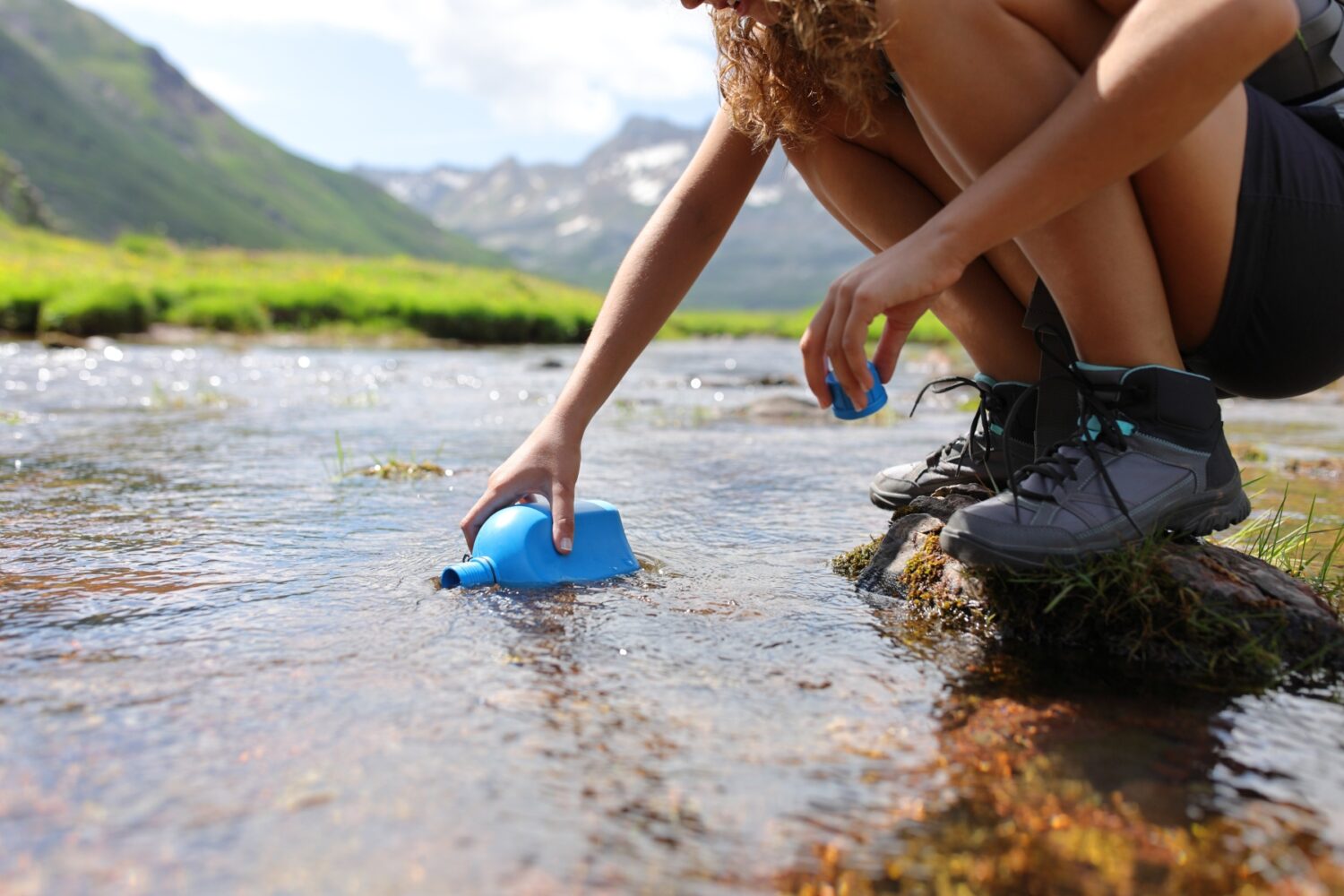Some of the links in this post may contain affiliate links for your convenience. As an Amazon associate I earn from qualifying purchases.
In a wilderness survival situation, particularly one where an individual likely won’t be found in the immediate future, finding a source of water is crucial. According to wilderness survival expert Jim Cobb, “Having the means to filter and disinfect water is important, but you have to find it first.“
Why?
Dehydration is a serious concern in wilderness survival. It can lead to dizziness, confusion, rapid heartbeat, and even unconsciousness, greatly hampering an one’s ability to make rational decisions and take effective survival actions. This is why the ability to locate water sources is so crucial. Dehydration can have serious consequences.
Cobb provides the following valuable insights into locating natural sources of water.
7 Tips to Find Natural Sources of Water
Here are a few tips on finding natural sources of water.
- Follow game trails, if you can find them. If there are animals in the area, and there are almost always critters around, they need water just as much as you do. Let them do the work for you. They will almost surely lead to a water source. Generally speaking, trails that lead downhill and/or seem to converge with other trails will lead you to water.
- Watch our feathered friends. They will often visit a water source in the morning and in the evening. Keep an eye out for them flying overhead and follow in that direction. Birds heading to a water source tend to fly in a straight line and rather fast. After visiting the water source, they may fly in a more meandering type of way.
- Keep in mind that water doesn’t run uphill very well. You’ll have much better luck looking in low spots like valleys than you will by going to the top of a ridge (unless it is just for a higher vantage point).
- Look for dry riverbeds and dig down in spots where the river takes a sharp bend, concentrating your efforts on the outside bank of the bend.
- You’ll get more bang for your buck, so to speak, by melting ice instead of snow if you have the choice. There is an awful lot of airspace in snow and what seems like a lot in the pot ends up being not so much. Either way, avoid just popping the frozen water into your mouth and letting it melt. Doing so cools down your core temperature, which isn’t a good thing. Instead, put the ice or snow into a plastic bag or other container and keep it under your coat, letting your body heat melt it first.
- Collect dew in the early morning by tying bandanas or other cloths to your legs and walking through high grass. Pause regularly to wring out the water into a container. If you’re stuck near a vehicle or something along those lines, you can wipe the dew off with a cloth and wring it out, too. You might not get a ton of water with dew collection but every little bit adds up.
- If you have a garbage bag or other large plastic bag, tie it over the end of a leafy branch, tossing a small rock into the bag first. The rock will weigh down a corner of the bag. Over the course of several hours, water will condense out from the leaves and drip to the bottom of the bag. Either remove the bag, being careful to not spill any of the water, or cut off the corner and then tie a knot in the bag to keep it working for you. Here is another good reason to carry a garbage bag.
- Despite what you may have read elsewhere, solar stills aren’t usually worth the effort. A solar still consists of a large hole dug in the ground with a plastic sheet stretched over the top. A rock is placed at the center of the plastic and a container placed in the hole directly underneath. Over time, water will condense on the bottom of the plastic and drip down into the container. It is a lot of work to dig that hole and the water you’ll get for your efforts is often minimal. But, it is something to consider if you’ve run out of all other options.

Final Thoughts
Water is a critical element of survival. While our bodies could last up to a few days without hydration, you really don’t want to be a test case. Any time you’re out in the wild, make note of water sources as you travel. Always drink and gather water when you can.
Frequently Asked Questions
You would first need to desalinate the water, then purify it before you could drink it.
When collecting water from a natural pond, draw from below the surface and above the bottom. If you have the choice, avoid stagnant pools with algae or lots of foam, as the excess algae can indicate contamination. Read more about using pond water as part of your overall survival strategy.
Originally published February 15, 2015

















